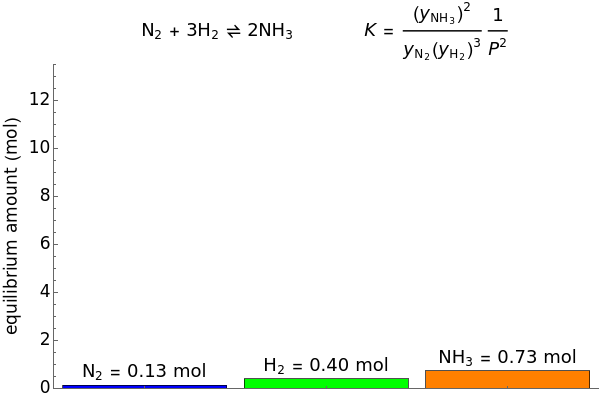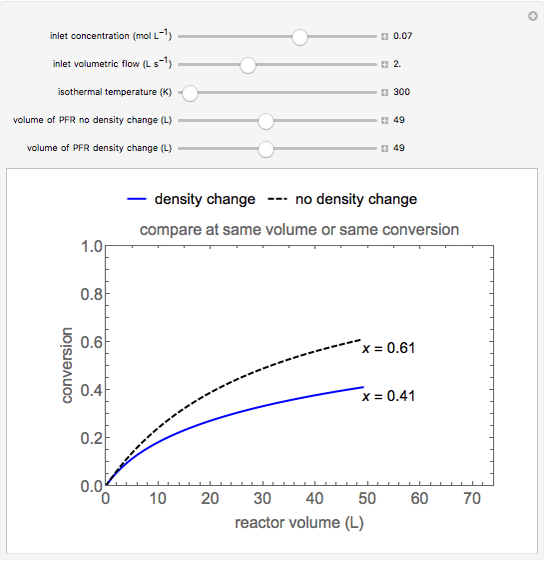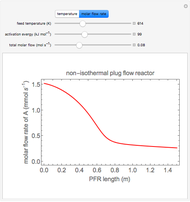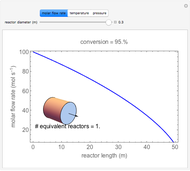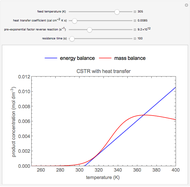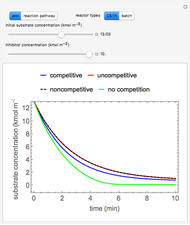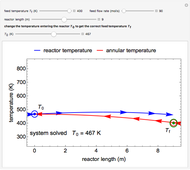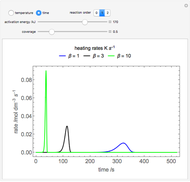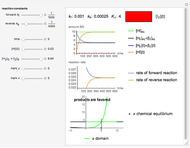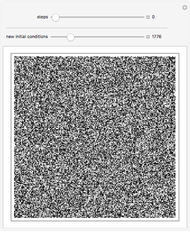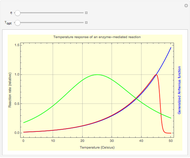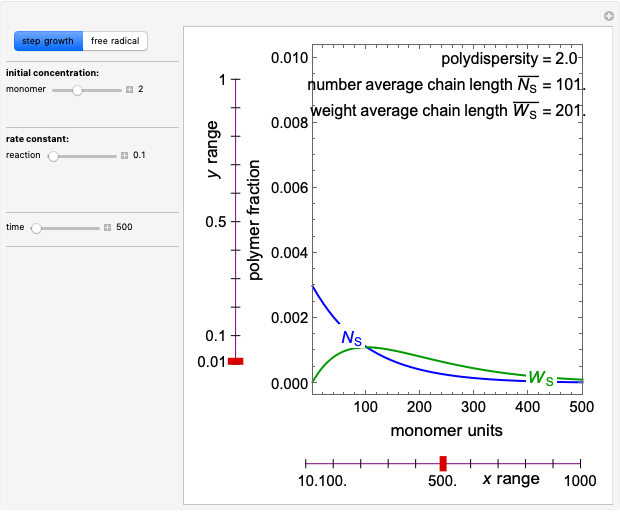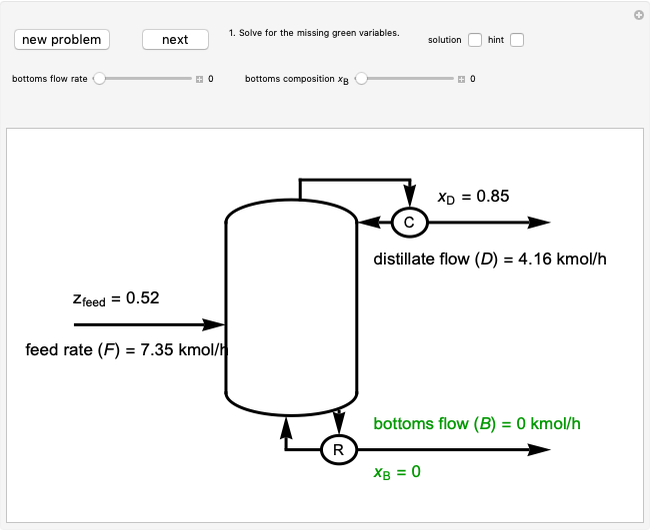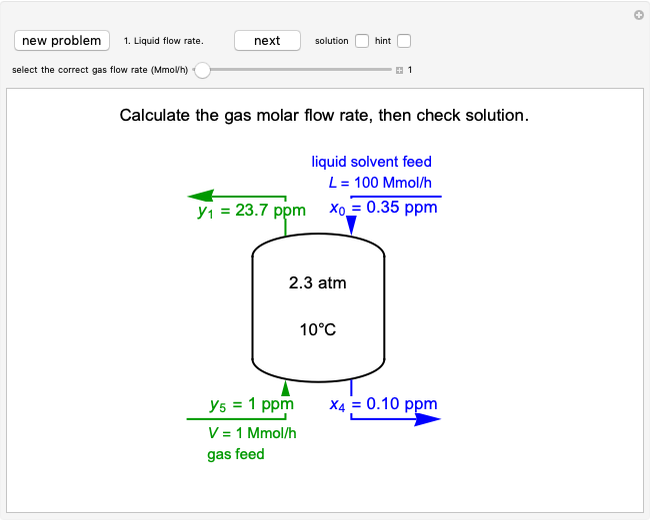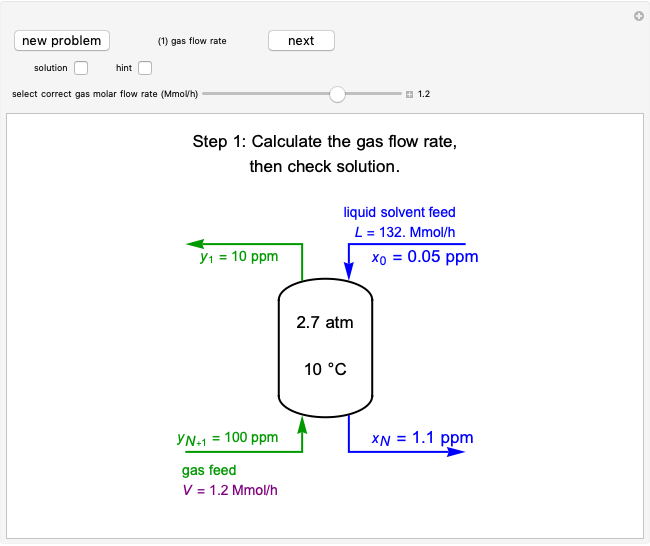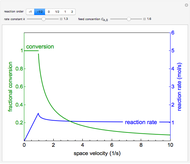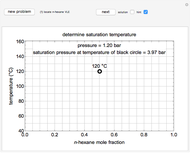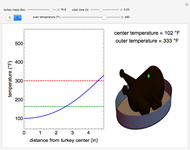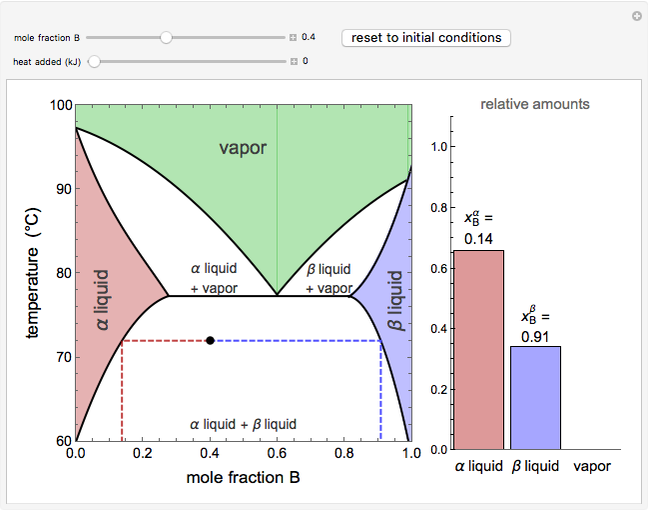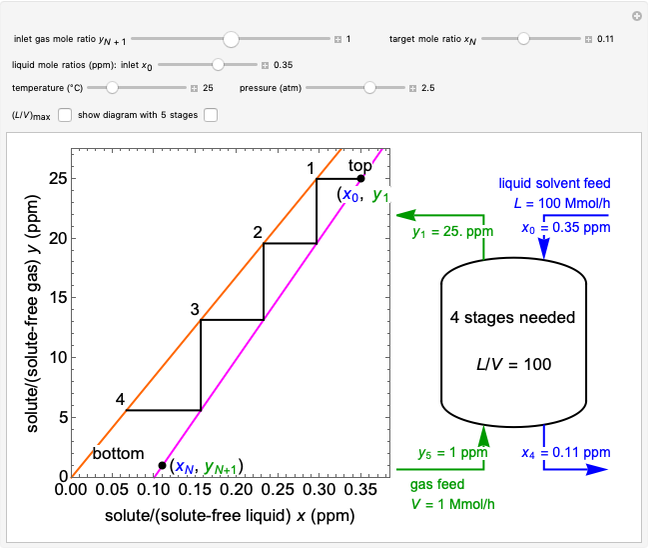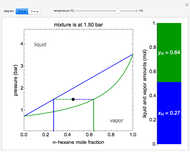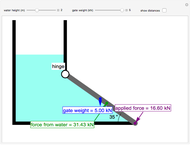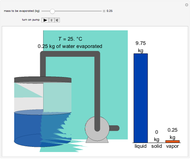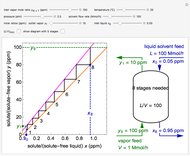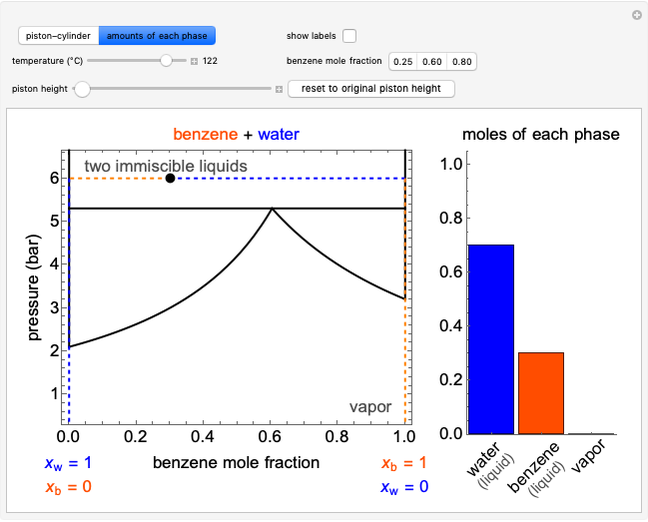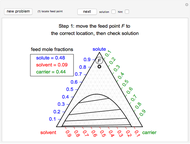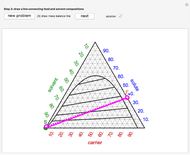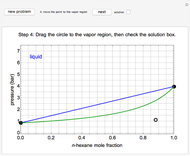Chemical Equilibrium in the Haber Process

Requires a Wolfram Notebook System
Interact on desktop, mobile and cloud with the free Wolfram Player or other Wolfram Language products.
This Demonstration calculates the number of moles at equilibrium for the reversible, exothermic reaction that synthesizes ammonia ( ) from hydrogen (
) from hydrogen ( ) and nitrogen (
) and nitrogen ( ), known as the Haber process. This reaction typically takes place near 200 bar and 675 to 725 K. The system starts with 1 mol
), known as the Haber process. This reaction typically takes place near 200 bar and 675 to 725 K. The system starts with 1 mol  and goes to equilibrium. Use sliders to add additional moles of
and goes to equilibrium. Use sliders to add additional moles of  ,
,  and
and  at constant pressure and temperature and observe how they change equilibrium. Vary pressure and temperature with sliders. Because 4 mol of reactants form 2 mol of product, raising the pressure shifts equilibrium toward products. Gases are assumed ideal, but at the high pressures used for this reaction, significant deviation from ideal behavior is likely.
at constant pressure and temperature and observe how they change equilibrium. Vary pressure and temperature with sliders. Because 4 mol of reactants form 2 mol of product, raising the pressure shifts equilibrium toward products. Gases are assumed ideal, but at the high pressures used for this reaction, significant deviation from ideal behavior is likely.
Contributed by: Benjamin L. Kee and Rachael L. Baumann (May 2014)
Additional contributions by: John L. Falconer
(University of Colorado Boulder, Department of Chemical and Biological Engineering)
Open content licensed under CC BY-NC-SA
Snapshots
Details
The reaction  is used in the Haber process. The moles of each component at equilibrium is:
is used in the Haber process. The moles of each component at equilibrium is:
 ,
,
where  are the moles of component
are the moles of component  added,
added,  is the stoichiometric coefficient and
is the stoichiometric coefficient and  is extent of reaction (mol). Initially only 1 mol
is extent of reaction (mol). Initially only 1 mol  is present.
is present.
The mole fraction at equilibrium  is:
is:
 ,
,
 ,
,
where  is the total number of moles.
is the total number of moles.
The extent of reaction is found by setting the equilibrium constant  equal to the equilibrium rate constant
equal to the equilibrium rate constant  and solving for
and solving for  :
:
 ,
,
 ,
,
where  is Gibbs free energy (J/mol),
is Gibbs free energy (J/mol),  is the heat of reaction (J/mol),
is the heat of reaction (J/mol),  is the entropy change of reaction (J/(mol K)),
is the entropy change of reaction (J/(mol K)),  is temperature (K),
is temperature (K),  is the ideal gas constant (J/(mol K)) and
is the ideal gas constant (J/(mol K)) and  is pressure (bar).
is pressure (bar).
The screencast video at [1] shows how to use this Demonstration. The screencast at [2] show solutions of an example problem on gas phase equilibrium.
References
[1] Chemical Equilibrium in the Haber Process [Video]. (Jan 20, 2017) www.colorado.edu/learncheme/thermodynamics/HaberProcess.html.
[2] Gas Phase Chemical Equilibrium [Video]. (Jan 20, 2017) www.youtube.com/watch?v=3ArBH_gbsNw.
Permanent Citation
